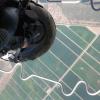Loose rivets causing seeping fuel?
-
Members Online
- Yourpilotincommand
- Max Clark
- ELysek1
- FlyingScot
- SKI
- anthonydesmet
- Schllc
- johnnyr172
- Rick Junkin
- Rwsavory
- blaine beaven
- Pmsnazzy
- Beechbum
- Parker_Woodruff
- PT20J
- Immelman
- eman1200
- jamesyql
- GeeBee
- BrettD
- Justin Schmidt
- 201Mooniac
- ArtVandelay
- 1980Mooney
- spistora
- pirate
- MikeOH
- Stealth Mooney
- exM20K
- theanswriz42


Recommended Posts
Join the conversation
You can post now and register later. If you have an account, sign in now to post with your account.